A certain level of independence and a real sense of satisfaction can be gained from the growing hobby of gardening at home to produce food crops! As with any hobby, starting small and making a success of it encourages the whole family to get off the couch and their screens and into the garden. One of the easiest ways to make a succesful vegetable garden at home is by doing something called lasagna gardening, but what happens if you live in an apartment, or the weather outside is dreadful? We have the solution!
Growing food indoors can be done without experience, with very little effort, and is an ideal introduction into gardening for all the kids out there who complain of being bored at home the moment 'the internet breaks' ;-) . Fresh microgreens, herbs and sprouts grown in a south facing window can provide healthy edibles in a matter of weeks, follow our simple instructions and enjoy fresh food at home.
Growing sprouts indoors at home
Sprouts are germinated seeds, which is just the beginning growth of a seed; they are extremely healthy and some go from seed to ready to eat within 5 days. They are something of a ‘gateway crop’ to a full-on gardening addiction because they are tasty and healthy, and once you discover how fast and easy they are to grow, you’re going to want a whole farm. Okay, maybe that’s an exaggeration. But if you’ve never grown anything except green fur on a Chia Pet then this is definitely the place to start.

Sprouts will provide you with enzymes, chlorophyll and essential nutrients right from your window sill in the dead of winter; although requiring a minor amount of daily care, homegrown sprouts are healthier and far cheaper than what you will find at most grocery stores.
To begin growing sprouts, you will first need to get seeds, and be sure they are specifically ‘sprouting seeds’. There are many different varieties and flavors; while all are fresh and healthy, they vary from fairly bland or bitter or spicy; a good example of sharpness is the radish seed.
While sprouting seeds are available for bulk purchasing in some stores, beginners may do better with packaged products which contain helpful information. You can even find seeds for sprouting online.
How to grow sprouts in your window
Growing sprouts requires very little setup once you have seeds. It can be done with as little as a mason jar to get you started, and as your sprouts and your interest grows, you can accessorize your production kit if you like. Keep in mind – these are just seeds which, in the wild, fall off of plants and somehow manage to grow. So don’t overthink this or fret as if you were diffusing a bomb; it’s just not that hard to succeed. The steps are as follows:

- Put about 2 or 3 tablespoons of seeds in a jar and swirl them around with a cup or two of water and let them soak at least 6-8 hours or overnight. Cover the mouth of the jar with either a screen or a piece of cheese cloth held on with an elastic; this will facilitate draining but doesn’t let the seeds out. A small sieve can also be used for draining.
- Drain the seeds after 6 or 8 hours, pour some fresh water in and give them another swirl, then drain them again.
- Lay the jar on a slight downward angle so no water pools in the bottom.
- Before the seeds have sprouted, it’s better to be kept in the dark. You could place the container in a cupboard but the old adage is true; out of sight, out of mind. A beginner is wiser to leave the jar on a countertop and covered with a thick cloth or towel so that it’s not forgotten.
- Re-soak and drain them in the morning and evening to keep them moist. Once you see the start of a sprout form, you can let them see the light. That’s how it happens in nature – a seed in the ground where it is moist and dark begins to sprout, then it wants sun.
- Keep up your twice-daily soaking routine for probably 3 to 5 days, at which point you will have a jar full of thick green sprouts ready to eat. (If your preference is white sprouts, make sure they stay hidden in the dark after each rinse.) Any uneaten sprouts can be stored – well drained – in the fridge for a few days.
Assuming you like the ability to have a safe and nutritious fresh food every day with minimum effort and that takes up no room in the fridge, it’s great to have a few containers on the go in different stages of production to give you a daily supply.
Growing microgreens at home
Microgreens are the early shoots of the leafy greens or vegetables we normally grow and eat; the difference being that they are harvested before the plant has matured. Some microgreen plants can be the same as the sprout seeds growing in your window; the difference being that they are seeded in soil rather than harnessing just moisture and light to grow, the way sprouts do.
For harvesting, you don’t eat the entire seed and plant like with sprouts. Typically, you would leave the root structure in place and just trim a tray of microgreens with scissors about a month after germination when the plants are only about 2 inches tall.
Microgreens have greater nutritional value and vitamins than matured plants, so they are considered something of a ‘super food’. Because they are soft in texture, microgreens on sandwiches and salads won’t give the crunch you get from sprouts.
How to grow microgreens at home

Like growing sprouts, growing microgreens is a very easy process that doesn’t require a lot of equipment or experience. With very little equipment and effort you can have microgreens ready to harvest in under a month, here’s how -
What you need:
- Potting soil;
- Shallow trays or containers, such as deep pie plates or even disposable take out containers;
- Seeds;
- A window with about 4 hours (or more) of direct sun exposure per day.
Steps for growing microgreens at home
- Read the envelope the seeds come in first, because the ideal growing process may vary a bit by plant type (sprouting and microgreen seeds are available online, see here).
- Lay about an inch and a half of potting soil in a tray, level it but try not to compress it too much.
- Spread the seeds over the surface of the soil and gently push them into the soil a bit, using your hand, or even a piece of cardboard.
- Once the seeds are in the soil, cover the whole surface with a thin layer of soil and wet the top surface (a clean spray bottle is great for this).
- Mist them twice a day but don’t over water them; do this for 3 to 5 days until sprouts appear.
- Continue to mist them once a day after they’ve sprouted.
- Microgreens need about four hours daily of direct sunlight to thrive. If they look spindly and pale, that’s an indication that they need more light than they are getting. If you don’t have a south facing window but you really want to produce your own food, you could look for a small grow light.
Which plants are best for growing microgreens?
A windowsill microgreen garden can be started with leafy vegetable plants, salad greens, herbs. You can either do a mono-crop with one type, or mix it up a bit. Some of the easier plants to grow are lettuce, kale, radishes, beets, broccoli, or even some edible flowers like sunflowers.
The best idea is to start with separated seeds so that you can begin to identify the flavors you prefer, then mix them as you wish. Seeds will also have different growth rates, so make sure that the harvest time for seed mixes is about the same. Egg cartons are an easy way to try different varieties; fill the indentations with soil and follow the instructions mentioned earlier. If space is limited, try two or three types to each carton and use popsicle sticks broken in half to identify the seeds. Find seeds online here for home delivery.
Edible house plants & herbs that grow at home
Houseplants are a beautiful addition to any home, their green abundance is great to look at, so why not add some herbs? People often ask which houseplants improve the quality of air in homes; well at least with herbs in the kitchen they release appetizing fragrances that compliment any interior.
In a container at least 3 or 4 inches in depth and diameter, sow some parsley or basil. The parsley will be slow to germinate but will be delightful on a kitchen windowsill. Both of these plants are great to have handy when you need them. Others to try are chives and rosemary, mint or whatever fragrant herbs you can cook with and make you happy seeing them on your window sill.
I'm often reminded of life's simple pleasures by gently running my fingers through the leaves of my windowsill herb garden... I recommend it - very grounding.

Now you know more about growing sprouts and microgreens at home to suppliment our diet, here are some more pages about growing food at home indoors or in backyards.
Find more about green lifestyle choices and home construction in the Ecohome Green Building Guide pages and find out about the benefits of a free Ecohome Network Membership here. |
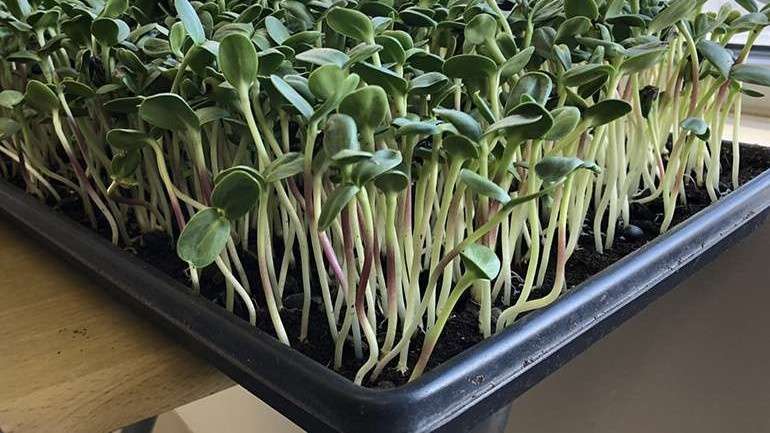















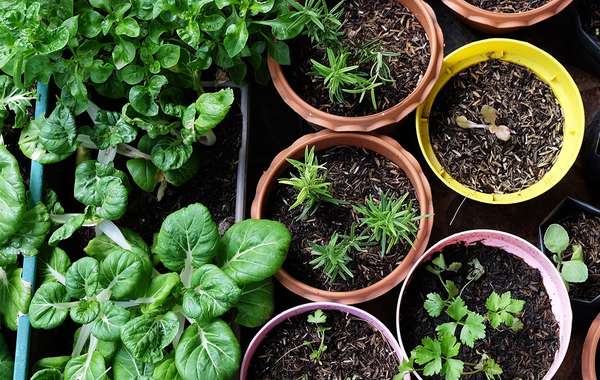

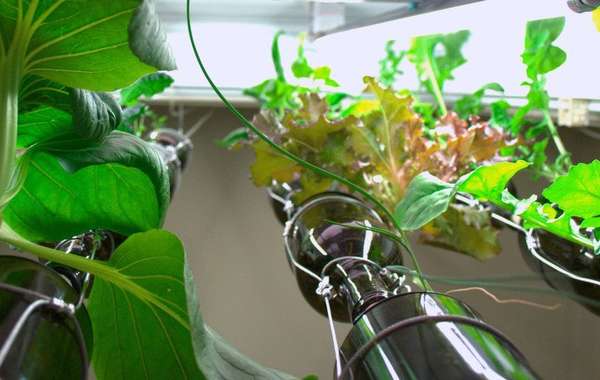
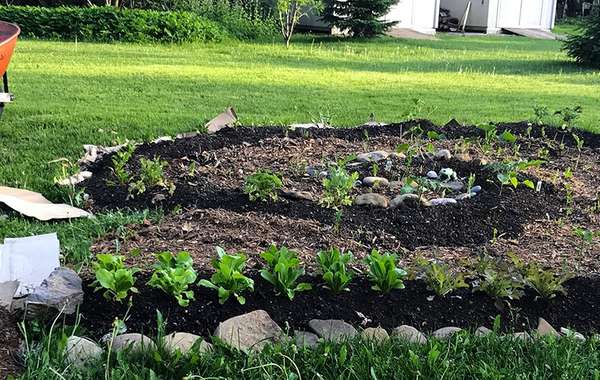
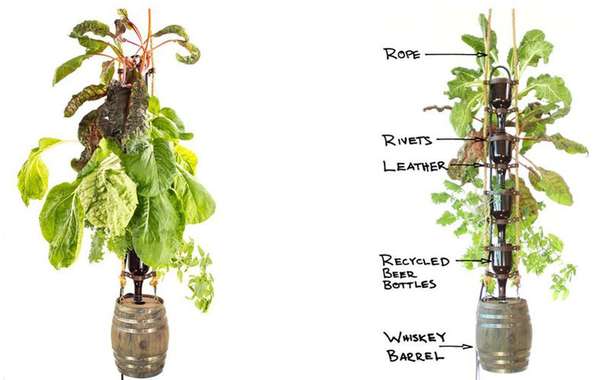
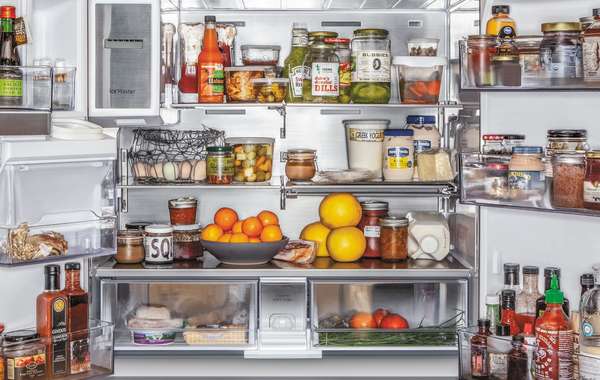


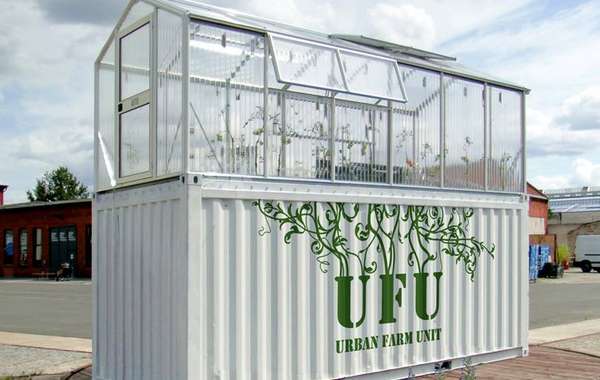

Comments (0)
Sign Up to Comment